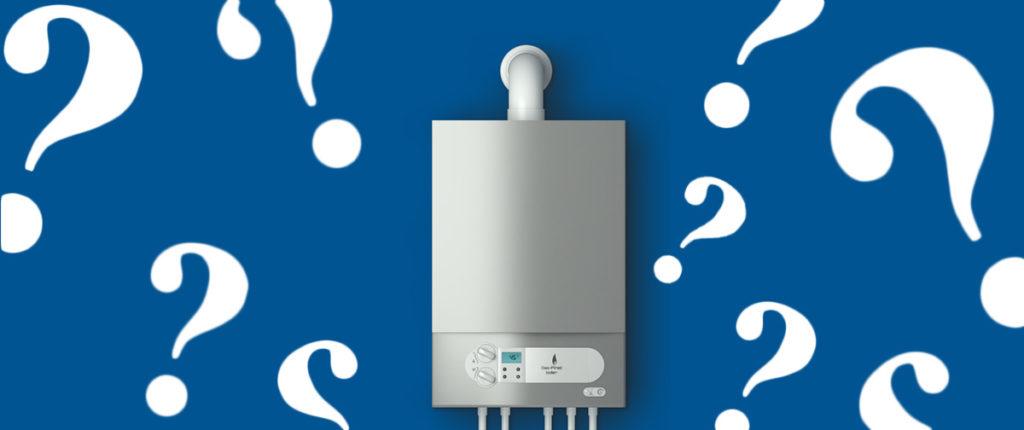What is a Boiler and How Does it Work?

Before the boiler was invented, people were relying on wood and coal fires to heat their homes, and that meant lighting, tending and cleaning a fire in every room of the house that you wanted to be comfortable in. Today, in the age of the central heating boiler, this would be an unthinkable inconvenience for most.
However, while the vast majority of homes in the UK have a central heating boiler, many people are not sure exactly what it is, how it works or what they can do to help it work more effectively and efficiently. If you are one of these people, this article will take things back to basics without the complicated jargon.
What is central heating?
The concept of central heating is very simple. Rather than having a heater or open fire in every room of the home, you have a single appliance – a boiler – which produces a steady supply of hot water. This hot water is then pumped (by an electrically powered pump) around metal pipes in your home to fill radiators in all your rooms.
Get FREE Boiler Quotes
What is a boiler?
The boiler is the white metal unit usually found in the kitchen, although it can be in any room of the house, outside in an outhouse/garage or in the garden. It is the most important part of a central heating system as it produces the heat. Essentially, it is a small furnace which uses gas, oil or LPG to fuel its operation. The majority of boilers in the UK are fueled by natural gas which feeds through automatically from the national gas grid. There are also different types of boiler depending on how it operates, but we will go into more detail about that later.
How does a gas boiler work?
In a typical gas central heating boiler there are pipes entering the boiler underneath. One is the pipe which feeds gas from the mains gas supply (which is outside your home in the street) into the boiler. Another pipe enables cold water to enter the boiler so it can be heated and another enables hot water to exit the boiler so it can be pumped around your home.
1. Inside the boiler are the fuel jets and heat exchangers. When you turn on your heating, a valve opens which enables gas from the mains supply to enter a sealed combustion chamber inside the boiler. The gas enters via lots of small valves and is ignited by an electric ignition switch creating blue flames*. These jets heat a metal component in the boiler called a heat exchanger which transfers the heat to the cold water pipe. This transfers heat from the gas jets to the water and heats it up to around 60°C (140°F).
2. Once the water has been heated to temperature, an electric pump which is either inside the boiler or very near to it will pump it around a continuous circuit of pipe which runs all around your home and passes through all of your radiators both upstairs and downstairs.
3. The hot water enters each radiator, flows around a closed loop, i.e. it enters at one side and leaves at the other, radiating heat into the room.
4. When the water has travelled through all of your radiators it returns to the boiler. By this time it has cooled down quite a lot so the boiler will refire the gas jets to reheat the water before sending it around again. The same water will be circulated around your home every day until the system is drained by a professional Gas Safe engineer.
5. While the boiler is burning gas it produces waste gases which need to be released outside of the home. This is done via a tube called a flue.
*IMPORTANT: If the flame inside your boiler is not blue, e.g. it is yellow or orange, the boiler is not getting enough oxygen. This can be very dangerous as it may mean the boiler is emitting a lethal gas called carbon monoxide. This gas is colourless and odourless but can kill quickly so it is important to install a carbon monoxide detector near your boiler.
Find out more about carbon monoxide poisoning.
Get FREE Boiler Quotes
What about oil and LPG boilers?
Generally, oil and LPG boilers work in much the same way as gas boilers. The key difference is that the fuel is not supplied by a national network of pipes but a tank of fuel which needs to be kept on the property.
Do boilers heat water for taps and radiators?
This is where we get into the different types of boilers as there are key differences. Many modern boilers can act as a central heating boiler and as a water heater for your taps, but others may only be able to supply your central heating. Here is a brief description of each type of boiler:
Regular (also known as conventional or traditional boiler)
This boiler will produce hot water for your central heating system but not for your taps, baths and showers. Through gravity the boiler is fed cold water from a tank in the loft. These boilers are used in combination with a hot water storage cylinder in an airing cupboard which will heat and store water for you to use in the home.
System
A system boiler is very much like a regular boiler in that it requires a hot water storage cylinder to store hot water for your taps, but it is supplied with cold water from the mains at a higher pressure. This means there is no need for a feed tank in the attic.
Combi (combination)
Combi boilers are the most commonly installed today as they have two heat exchangers and two hot water pipes. One is connected to your radiators and the other to your taps, showers and bath. There is no need to have a feed tank in the attic as the cold water comes from the mains supply and as it produces hot water on demand it does not require a storage cylinder. While regular and system boilers require a hot water cylinder which needs time to refill once it has been emptied, a combi boiler will produce hot water on demand.
Find out more about the different types of boiler here.
What do central heating thermostats do?
There are several types of thermostat to choose from. The most basic are controlled manually, i.e. you need to physically turn it on and off again when you feel too warm or too cold.
Alternatively, a thermostat which is mounted on a wall will monitor the temperature in that room. You set the thermostat to your preferred temperature and when the room drops below that level it will turn the boiler on. When the room reaches the required temperature, it will turn the boiler off again.
Today, most people have programmable thermostats which can be programmed to turn the boiler on and off again at certain times of day, but smart thermostat technology is becoming increasingly popular. These heating systems are able to be controlled from a smart device like a laptop or smartphone from wherever you are in the world.
Get FREE Boiler Quotes
What about thermostatic radiator valves?
Thermostatic radiator valves or TRVs give you greater control over the temperature in different areas of your home.
A radiator is a relatively simple piece of equipment as it is a copper pipe repeatedly bent at right angles to produce a heating surface with the maximum area. The ridged lines on a radiator show where the heat pipes are. Water enters and leaves through valves at the bottom of the radiator on either side. In simple heating systems a radiator can either be on or off depending on whether or not the valves are open or closed.
By adding a TRV to a radiator, however, you can get greater control over the temperature in individual rooms of your home and help you to reduce how much your boiler needs to work, i.e. reducing heating bills and carbon emissions. Rather than having all radiators in your home heated to the same temperature, you can choose which rooms you want to be warm, e.g. living rooms and bathrooms, and which you prefer to be cool, e.g. bedrooms or rooms not often in use.
NOTE: It’s not a good idea to fit a TRV in a room where you have your main wall thermostat, as the two will work against one another.
What are condensing boilers?
You might come across the terms condensing and non-condensing boilers. In the past, boilers were non-condensing which meant that when the fuel was burnt a lot of heat was wasted when the exhaust gases were released. Wasted heat meant the boilers would need to work harder costing money and increasing carbon emissions.
Boilers were re-designed to combat this issue. Today, all boilers installed must be condensing which means that the waste gases and residual heat passes through the heat exchanger that warms the cold water returning from the radiators before it is released via the flue pipe. This helps it to heat it up and reduces the work that the boiler has to do.
Condensing boilers are much more energy efficient with over 90% of the energy used being converted into usable heat.
Considering a new boiler?
If your boiler is more than 8 years old, is becoming less reliable, more expensive to run or has broken down completely, it's time to get a replacement. The cost of boiler installation can vary between £500 - £1,000 on average (in addition to the cost of the boiler itself) so when it comes to finding the most competitive price, we highly recommend comparing multiple quotes.
While a boiler replacement can be a big investment, it's important to remember that a more energy efficient boiler could bring you significant savings in terms of reduced heating bills. For a more indepth look at how much a boiler replacement might cost you, take a look at our guide to New Boiler Replacement & Installation Costs.
To make finding multiple boiler installation quotes easier, use Boiler Guide to get free quotes from up to 3 heating engineers based in your local area. Simply take a few minutes to complete our online form and we'll match the work you need doing with boiler installers.
Get FREE Boiler Quotes



